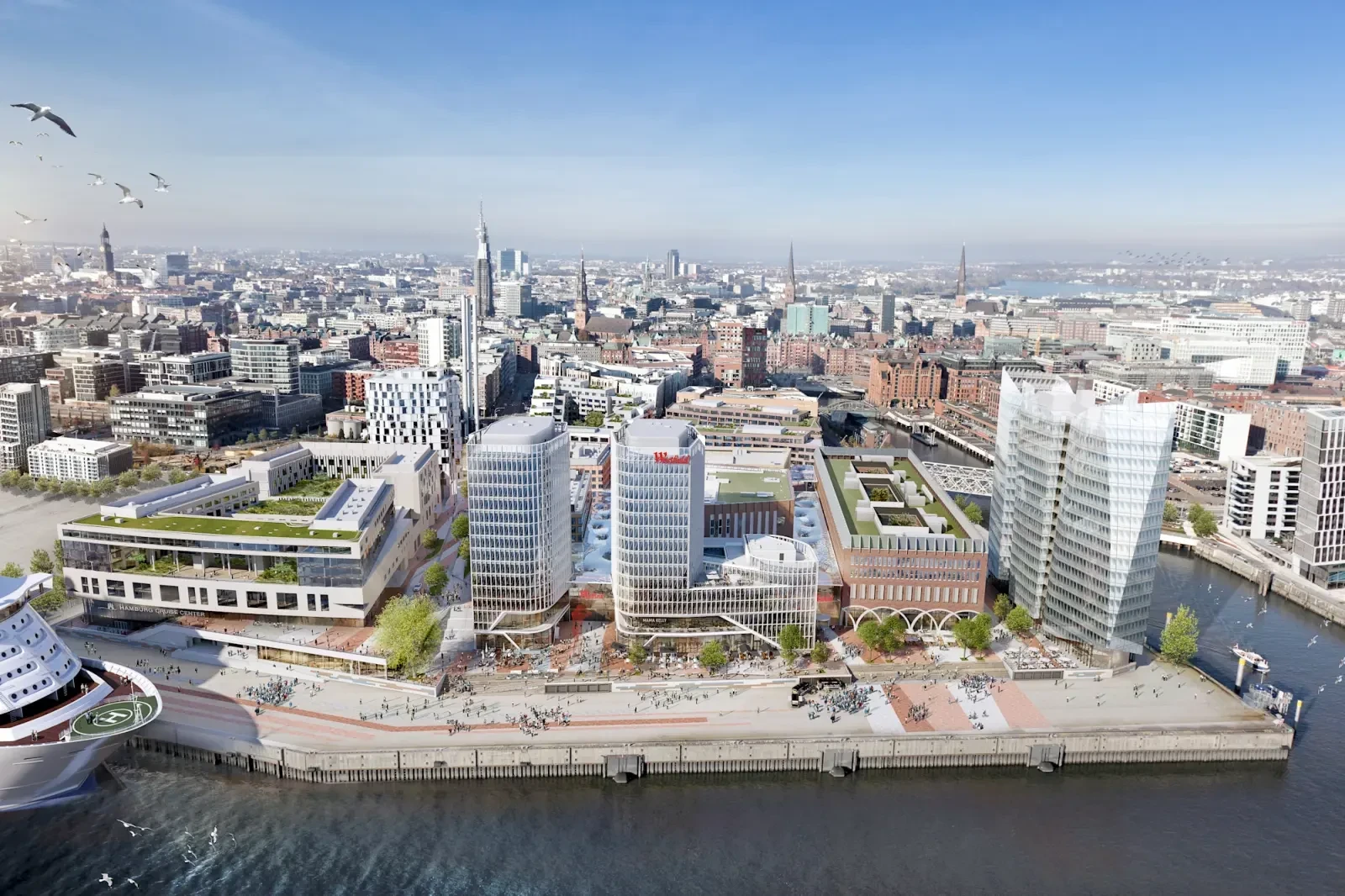Hamburg: a shopping mall like no other
Welcome to Überseequartier, Hamburg’s New “Piece of the City”
Inaugurated on April 8, 2025, after ten years of design work by Saguez & Partners for Unibail-Rodamco-Westfield, this space embodies the “Seaside District” design concept — a vibrant tribute to Hamburg’s Hanseatic and industrial soul, right on the banks of the Elbe. A place to live, pass through, and experience stories.
Beyond the Traditional Shopping Mall
Überseequartier in Hamburg is no ordinary shopping center. It’s a center within the city — physically open, designed in the spirit of urban passageways.
Whereas places like Les Halles or Les 4 Temps are also located within cities, they remain enclosed. Here, you’re by the harbor, in the heart of the historic Docks district. You can almost smell the sea and feel the weight of history through the old brick buildings.
At the same time, you’re immersed in a new cultural and tourist neighborhood — nestled between the Philharmonic, an art museum, new hotels, and right at the foot of the center, the arrival of cruise ships…
This inside-outside experience, where the lines between city and center blur, perhaps hints at the future of retail spaces. In fact, Hamburg’s mayor referenced this in his speech, citing La Maquinista in Barcelona — a center open to the city, an open-air mall.
The challenge here, in a northern country, was to cover the streets while still giving the impression of being outdoors. Even below ground, massive skylights bring in daylight — or at least a glimpse of the sky.
A Lively, Diverse Space Rooted in the City
The offering focuses on fashion, beauty, home goods, sports, and leisure, with a beautiful dining area directly connected to a large multiplex cinema — all spread over nearly 100,000 m².
Located right in the city center, in the heart of the old town, it also features separate parking areas for cars and bicycles. A space for shopping and leisure that in many ways feels more like Haussmann Saint-Lazare in Paris or Sainte-Catherine Street in Bordeaux — but car-free, safe, clean, well-maintained, and managed by a private operator.
Tomorrow, why not go even further? As in Sweden or Finland, it could integrate public services: sports facilities, education, a post office, a tourist office, a theater-concert kiosk, or local associations…
Beyond Commercial Architecture Norms
What’s most striking here may be the -1 and -2 levels — underground, yet they don’t feel like it.
The size and design of the skylights, the varied ceiling treatments, the play of light — it all contributes.
The industrial dock spirit is strong: frequent use of I-beams, mesh, metal, and local stone… All of it softened and made sophisticated by the generous use of copper, which is omnipresent.
Another innovation: the rest areas. Inspired by the “urban dock loft” style, they’re everywhere — injecting life into the mall and becoming true meeting spots through their quirky, often humorous designs.
A Word from Olivier Saguez
I deeply believe in the evolution of the shopping center and its new relationship with the city. Whether it's a hypermarket with a shopping gallery or a full-scale mall, everything is changing.
Beyond a more open architecture (ground-floor access, terraces, rooftops…), the real surprise must come from the offer itself.
An offer that’s less purely commercial, more connected to the city’s cultural and social dimensions. Spaces that breathe, empty by design. Less clutter.
In the age of digital commerce, people will make the effort to visit for a new kind of experience — but above all, for a place of connection and exchange: between indoors & outdoors, heritage & modernity, culture & commerce, nature & architecture, the expected & the unexpected.
And let’s not forget this: while still too commercial in nature, the shopping center remains one of the rare places where real social diversity still exists — in a safe, clean, and well-maintained environment.
